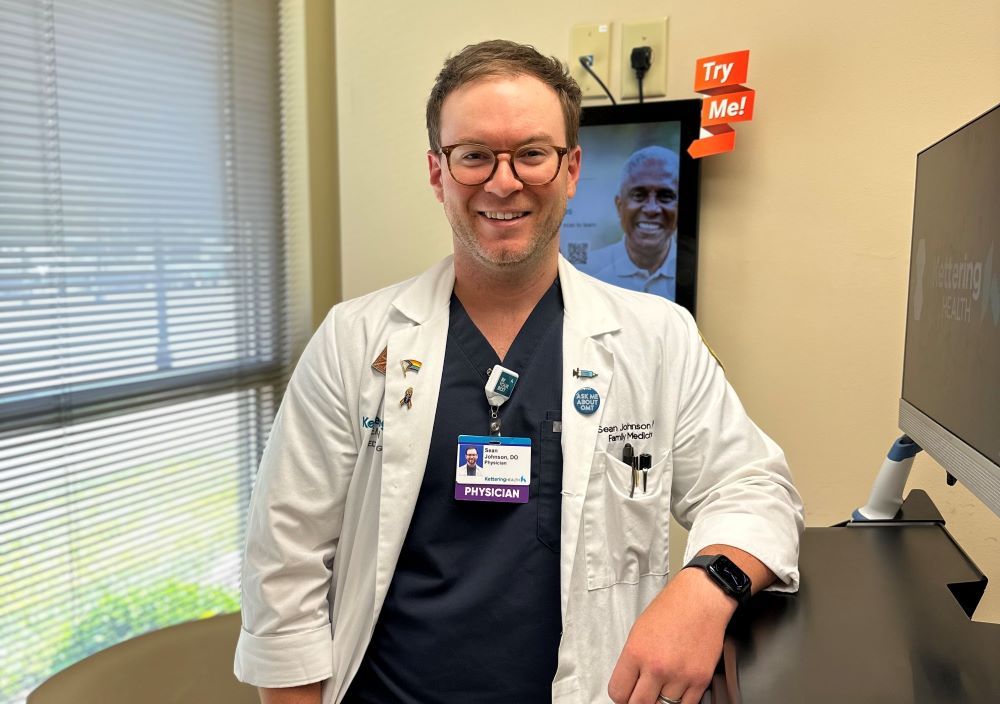Primary Care
Want to learn more about this at Kettering Health?
Constant headaches are frustrating. And they can make you desperate for answers, and more importantly, relief.
But you’re not alone. According to a Global Burden of Disease study, headache disorders are among the most common conditions worldwide.
Having struggled with migraines himself, Dr. Sean Johnson, a family medicine physician, has a special interest in headaches. He shares what we can learn from where and how headaches show up as well as options for relief.
What your pain is telling you
There are three primary types of headaches: migraine, tension, and cluster. Each shows up differently.
Migraine
“About 60-70% of the time, migraine-type headaches are going to be unilateral in nature,” says Dr. Johnson. “It’s the pounding sensation that’s on one side of the head.”
He suggests using “POUND” to identify migraines:
- Pulsatile – constant throbbing in the head or behind the eyes
- Onset – slow build-up that worsens
- Unilateral – pain typically occurs on one side of the head
- Nausea/vomiting – lights and sounds can heighten these symptoms
- Debilitating – people often only find relief by lying down in a dark, quiet room until it passes
Migraines can also be accompanied by auras—sensory symptoms that occur before or during a migraine episode. “The aura can occur at any time and really be anything—it could be a weird smell, a visual or auditory disturbance, numbness and tingling in the hands or feet, a weakness,” says Dr. Johnson. “It could even mimic a stroke.”
Tension
Nearly 8 out of 10 people will get a tension headache. “A lot of people experience tension headaches as a pressure or tightness in their head that might come up from their upper back or the neck,” says Dr. Johnson.
Tension headaches can show up in the back of the head, on both sides, or radiate over the top of the head. They can feel like a squeezing sensation and may come and go depending on what you’re doing.
Both migraine and tension headaches typically last a few hours up to days.
Cluster
“With the cluster headaches, those are rarer, but it’s going to hit you quickly, within minutes,” says Dr. Johnson. “The pain is deep, continuous, excruciating.” Unlike migraines and tension headaches, these last from 15 minutes to a few hours and can be more painful. They’re usually felt around the eyes or temples.
Headaches can also be a symptom of other conditions such as allergies, sinus and ear infections, TMJ disorders, dental pain, or hormonal headaches. These are known as secondary headaches.
Finding relief
Dr. Johnson gives these tips to find relief from headaches:
- Consider lifestyle: Do you drink enough water, get enough sleep, and eat a balanced diet low in salt and sugar? Are you managing your stress? Is your caffeine intake at a moderate level?
- Keep a headache diary: Track the day and time you get a headache as well as lifestyle factors mentioned above for at least two weeks. This can help you identify triggers.
- Talk to your doctor: There are daily medications or once-a-month injections designed to help prevent headaches and migraines, as well as as-needed medications.
- Osteopathic Manipulative Treatments (OMT): Dr. Johnson, like other doctors of osteopathic medicine (DO), has had success using this therapy. A DO applies gentle pressure to manipulate the muscles, soft tissues, and joints to treat tension headaches.
When it comes to pain relievers like Tylenol or ibuprofen, Dr. Johnson says occasional use (two to three days per week) is OK. But he cautions against overuse. He says this can cause your headaches to increase, and it indicates the need to talk to a doctor.
When to seek care
Dr. Johnson says people tend to assess headaches by the number of days they occur. But he takes a different approach.
“It’s ‘how much is it impairing your life?’ Say you only get two headaches a month, but each headache lasts five days. Your life is quite affected by it.”
If it bothers you enough that you have questions, reach out to your primary care provider. As Dr. Johnson says, “You’re not suffering alone.”
Dr. Johnson also says to seek immediate care if you start getting headaches for the first time, if anything is new or different about your headaches, or if a headache persists or worsens.











